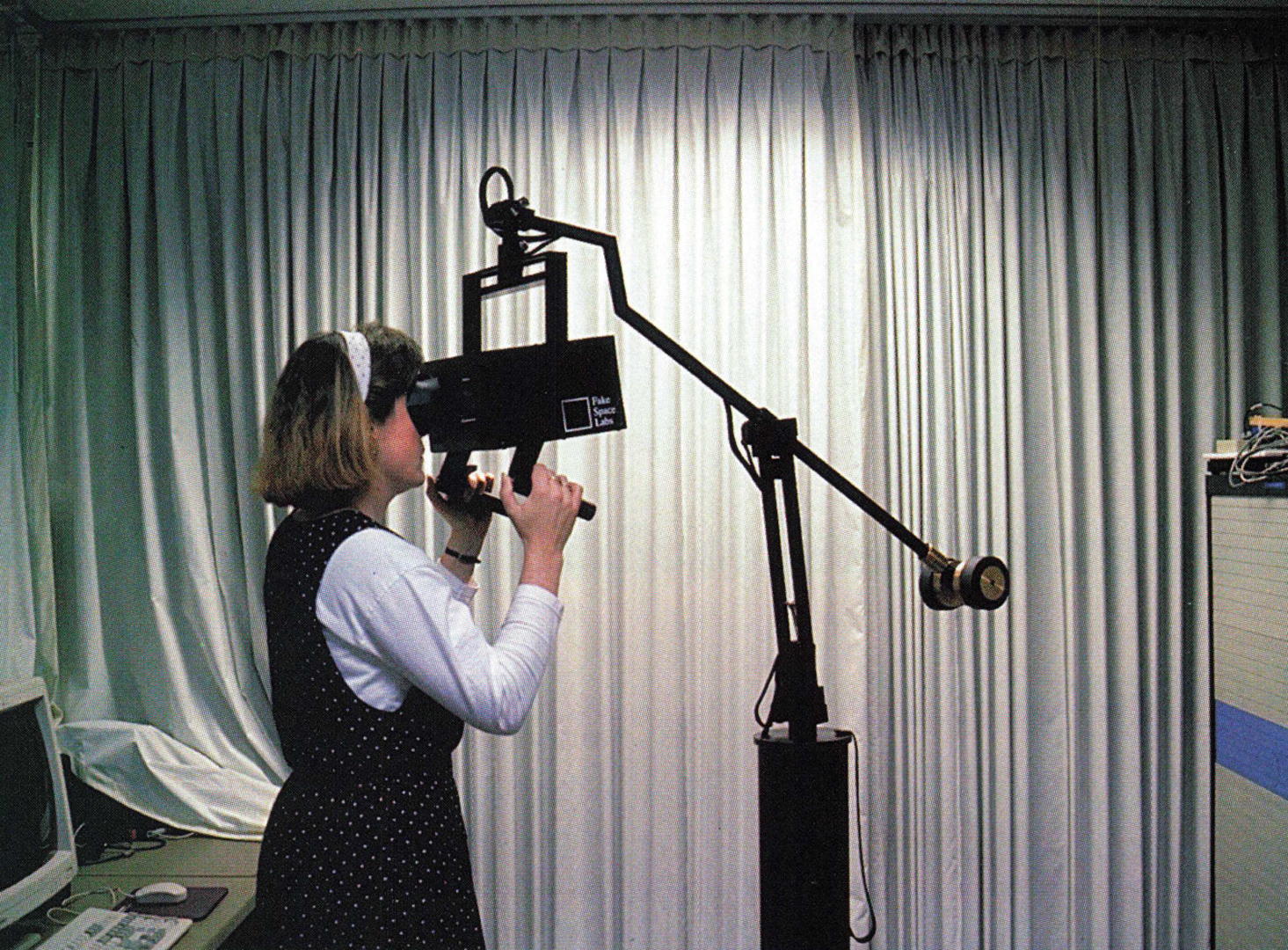“Virtual Environments for Public Exhibitions” by Bolas
Conference:
- SIGGRAPH 1993
-
More from SIGGRAPH 1993:


Type(s):
Entry Number: 49
Title:
- Virtual Environments for Public Exhibitions
Program Title:
- Tomorrow's Realities
Presenter(s):
Collaborator(s):
Description:
To enlighten, educate, entertain, elevate: museums of art, science, and history have used many methods to achieve their goals, all of which are designed to entice and immerse the visitor in the experience presented. Virtual reality is ideal for this purpose, either as a tool, or as a new medium for public exhibition. This piece presents two examples of such systems, each highlighting different types of worlds that can be created. The first uses virtual environment technology to expand an existing museum mainstay, the diorama. The second explores the fundamental nature of virtual reality as a medium for public exhibition.
“Early North America: A Virtual Site Reconstruction” was created for the Smithsonian Institution’s National Museum of American History by the Visual Information Technologies Program at George Mason University. This piece updates the purely visual and static experience of the ‘diorama’ into an interactive, immersive exhibit.
Before, the visitor might have walked past a series of scenes portraying specific aspects of American Indian life. Now, the visitor is actively involved in the exhibit when he or she moves the handles of the BOOM2C viewer, peeling back time, layer by layet~ to see changes to an American Indian site over the years. This brings to the experience an interesting and enlightening juxtaposition of concrete and abstract, of visual and tactile, of silence and sound while learning about a culture’s history and way of life.
“Tango Texture” was created by Fakespace Inc.’s Ian McDowall and Mark Bolas. Here, bits and pieces of our ‘real world’ everyday experiences are sampled, scrambled, and stapled onto the alien whitewashed landscape of the virtual environment. This is done through “texture mapping” -a process of pasting polygon-based models with flat photographs to create the illusion of a highly detailed model. This technique adds a powerful dimension to the palette of the virtual environment world designer. It enables the designer to convert surreal and often bland polygon-based worlds into rich and visually intricate places that are quickly accessible and immediately engaging for the visitor-an important requirement for public exhibition works. Using textures in non-traditional ways, this piece tries to converge the conventional with the unconventional, providing a perceptual conflict while retaining kinesthetic harmony.
Hardware and Software Providers
■ George Mason University: custom software and world designs
■ Fakespace, Inc.: BOOM, VLIB-SGI software, custom software and world designs
■ Silicon Graphics, Inc.: SGI Reality Engine, IRIS Performer
■ Software Systems: Multigen software




